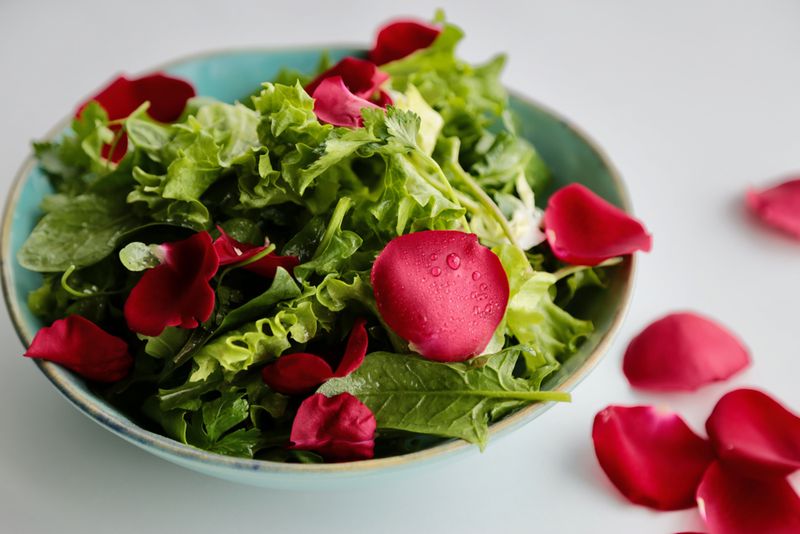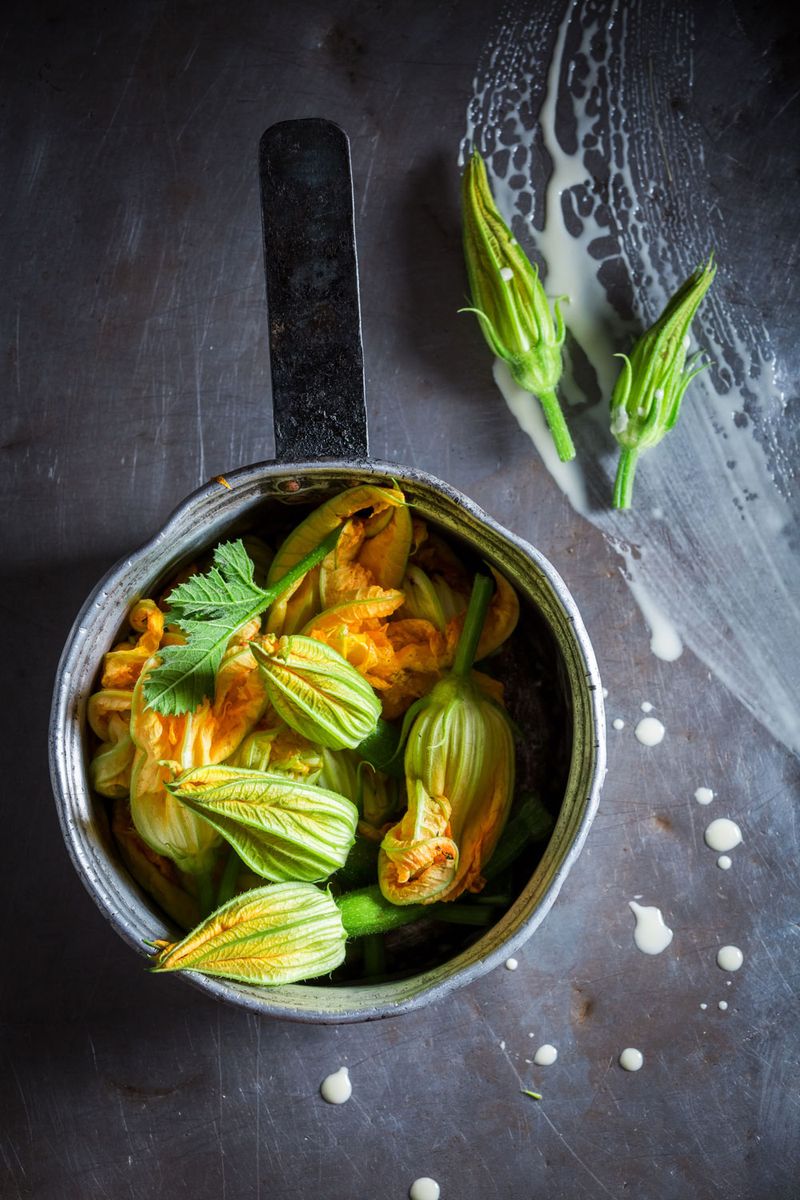Ever wondered what those tiny little edible flowers on your dish at a restaurant is doing, and whether you can eat them or not? Sure you can, even though they’re mostly added as garnish or to give the dish a slight pop of colour, edible flowers in fact also bring flavour and nutrients to your plate, even if it’s a small dose. Here’s a list of edible flowers you can eat without thinking twice about it:
Rose petals

Roses aren't just for romantic gestures; their petals also offer a subtle floral flavour to salads. But did you know they're also rich in polyphenols? These compounds have antioxidant properties, which can help fight inflammation and protect your cells from damage. It reduces anxiety and promotes relaxation. As per Ayurveda it has cooling properties, hence helps to balance pitta dosha. Ancient Chinese medicine uses it to treat digestive disorders, reducing pain from Injuries, menstrual irregularities etc.
Zucchini flowers

Zucchini flowers, also known as squash blossoms, are not only visually stunning but also nutritious. These delicate blooms are a good source of vitamins A and C, which are essential for maintaining healthy vision and boosting immunity. Due to its water and fibre content, it improves digestion. Reduces constipation. Helpful in weight loss and it is low-calorie. It is also helpful to regulate blood sugars due to fibre content.
Wild violet
These petite flowers contain vitamins A and C, as well as anthocyanins, the pigments responsible for their purple hue. Anthocyanins have been linked to improved heart health, cognitive function, and anti-inflammatory effects.
Marigold

Marigold flowers add a vibrant pop of colour to salads and offer a slightly spicy flavour. Additionally, marigold petals contain lutein and zeaxanthin, two compounds important for eye health, particularly in reducing the risk of age-related macular degeneration. According to Ayurveda and Unani medicine, it has anti-inflammatory, antipyretic, antimicrobial, and antiepileptic effects.
Hibiscus
This beautiful ruby-red flower is found easily on the streets of India, not to mention that it’s grown at home quite often. Apart from its ornamental usage, it has multiple health benefits as well. It reduces blood pressure, improves hair growth, boosts immunity etc. Polyphenols and flavonoids in Hibiscus flowers have anticancer, antiviral, antioxidant and anti-inflammatory properties.
AlsoRead01
Drumstick flower
Drumstick flower, mostly found in India, has liver protective, antioxidant, antiulcer, neuroprotective and antibiotic properties. It also improves sexual ability. As per ayurveda, it is as beneficial as nectar.
Incorporating these edible flowers into your salads is not only a feast for the eyes but also a nutritious addition to your diet. However, it's essential to ensure that the flowers you use are free from pesticides and other contaminants. If you're unsure about the source, consider growing your own edible flowers or purchasing them from reputable suppliers. As with any new food, it's wise to introduce edible flowers gradually into your diet to monitor for any potential allergies or adverse reactions. Once you've confirmed they agree with you, feel free to experiment with different combinations to create beautiful, flavourful salads all summer.



_1716806083555_thumb_300.jpeg)